How to Clean Tree Sap Off Windows
Tree sap is unsightly and sticky, so it’s a good idea to get it off your windows as soon as possible. Tree sap on the outside of windows can be removed by scraping with a putty knife or scraper. Cleaning tree sap from inside windows requires using an ammonia-based cleaner that will dissolve the gluey substance.
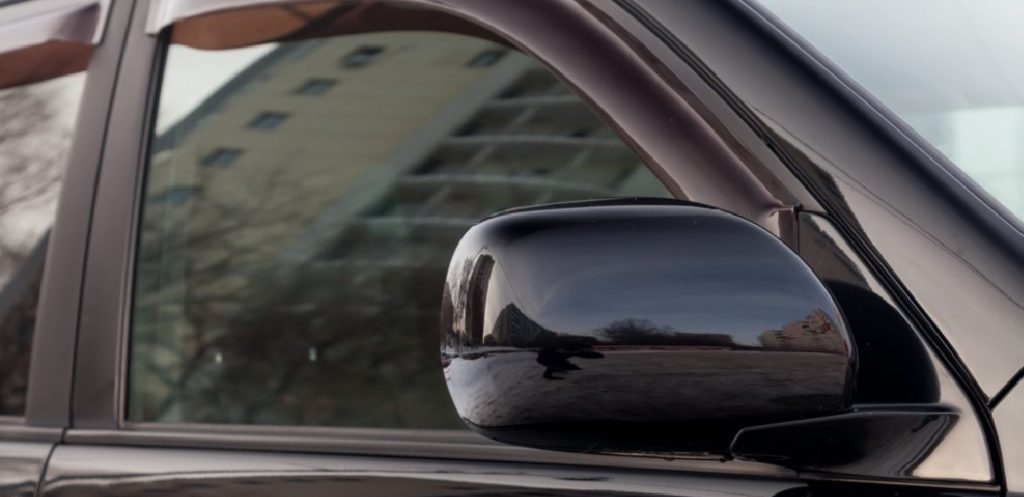
In this article, we’ll go into depth on how to clean tree sap off windows by using some common household products to remove the stubborn substance off your window panes without damaging the glass. Read on this blog post for more information!
Summary: Clean tree sap off your windows with this simple guide. First, use a dish towel to blot the sap off the surface of the window. Next, use a cloth or paper towel to buff the area until the sap is no longer visible. Finally, use a clean cloth or paper towel to clean the window surface.
What is Tree Sap?
Tree sap, often called latex or gum, is a sticky resin produced by the tree to protect its branches from insects and disease. The sticky tree sap spots material can be yellowish, brown, or reddish in color. Tree sap usually remains on the outside of windows, but occasionally it drips through an open window and onto the inside of your home. Unfortunately, tree sap is notorious for being difficult to remove from any surface. If the tree sap is fresh, it may be easier to remove with a putty knife or a razor blade.
The wonders on sap can be very difficult to remove because it drips and sometimes congeals, forming a coating of hardened tree “glue” on the window. Hardened tree sap residue often looks like glue or even paint, but it’s actually sticky tree resin. If you’ve ever left tree sap on your car and it turned yellow, white or brown, this is the same phenomenon. Sap can cause major damage to cars because it often contains ingredients that are corrosive and harmful to paint, but it can also ruin windows over time as well.
Why Is Tree Sap Hard to Clean?
Tree sap is very sticky and resistant to removal. It’s best to remove tree sap from windows as soon as it forms when the substance is still wet. Tree sap on glass usually adheres so strongly that you’ll need a special combination of quick action and strong cleaning agents to remove it without damaging the window.
If left on a window, the tree resin may solidify and form a tough coating on the glass. It can be difficult to scrape off without scratching the glass or leaving streaks, so it’s best not to wait until this happens before cleaning it.
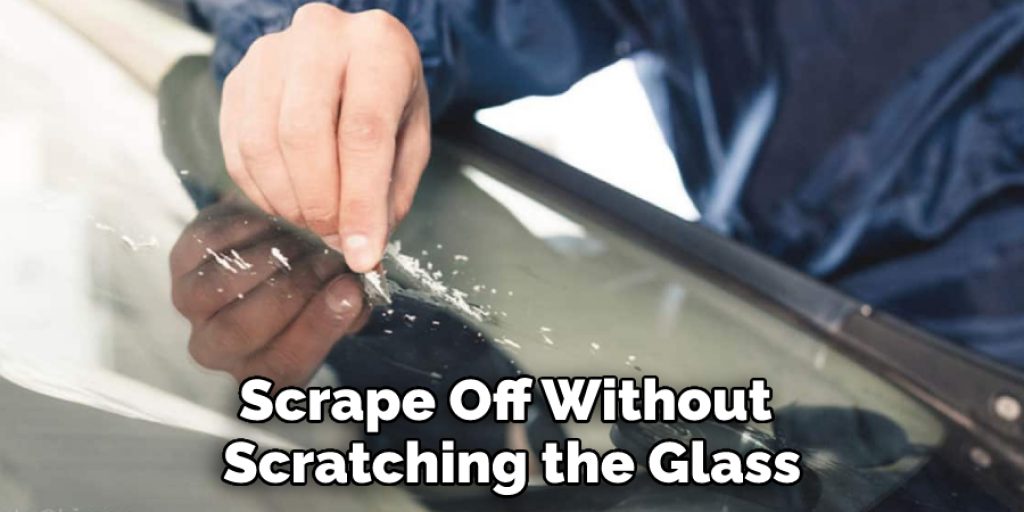
10 Ways on How to Clean Tree Sap Off Windows
1. Using Baking Soda:
Baking soda is a mild abrasive that can be used to remove tree sap from glass. Before trying this method, test a hidden area of the window pane to ensure it won’t damage the surface. Also, rubbing cup baking soda mixture onto the windows with your fingers may cause abrasions on the glass, so use a clean cloth instead and rub gently. Fill a small bowl with equal parts baking soda and water, creating a paste. Dip a clean cloth into the mixture and rub it onto the sap-stained area of the window. Rinse the area with clean water and dry it thoroughly.
2. Using Rubbing Alcohol:
Rubbing alcohol is another technique for removing tree sap from glass. It has a low evaporation rate, so it will not cause the glass to dry out too quickly. If you accidentally spill some on painted surfaces, the rubbing alcohol should evaporate without damaging your paint job. Apply the rubbing alcohol with a clean cloth and rub gently. Acetone is an effective solvent for tree sap, but it can damage paint, so be careful not to spill any on painted surfaces. Apply acetone with a clean cloth and rub gently. WD-40 is another popular option for removing tree sap from glass.

3. Using Mineral Oil:
Oil is another way for cleaning tree sap that you can try on glass. Apply the mineral oil with a soft, dry cloth or cotton ball, and wipe it onto the tree resin to dissolve it. If you want to add more force against the sticky tree sap, use a little extra pressure with your cloth. As you apply the mineral oil to the stained glass, be sure that you don’t apply too much. You may just want to dab it lightly until it disappears into the tree sap.
4. Using Dish Detergent:
Dish detergent contains various cleaning agents and mild abrasives that can help removing tree sap from glass panes. Be sure to only use non-bleach dishwashing liquids if you’re planning on using them near the windows because bleach may damage paint or tinted glass surfaces. Instead, pour some dish detergent onto the windows, and then use a clean cloth to rub it into the tree resin.
5. Using Wax:
A waxy substance like car wax can help dissolve tree sap from glass. Apply the car spray wax to the plastic window with a clean terry cloth, and then rub it into the tree resin. The key to using this technique is to use a very small amount of car wax to only mildly dissolve the sap instead of removing it completely. When the sap is mildly dissolved, remove the sap with a clean terry cloth towel or chamois.
6. Using Rubbing Alcohol and Hydrogen Peroxide:
The mixture of rubbing alcohol and hydrogen peroxide can be used to remove the amounts of tree sap from the glass. Be sure to use a low evaporation rate for this cleaning technique because it may damage the glass if too much evaporates onto it. Apply the rubbing alcohol and hydrogen peroxide mixture to your windows with a soft, clean damp cloth, and then wipe it into the tree resin.
7. Using Vinegar:
White vinegar is another regular glass cleaner that you can use to remove tree sap from inside your home. White vinegar contains acetic acid, which helps dissolve the tree resin on contact. Pour some white vinegar with boiling water onto the windows, and then wipe it around with a clean microfiber cloth. You can then wash it off with plain water to help remove any leftover tree sap on the windows.
8. Using Warm Water:
Warm hot water may also make it easier to remove tree sap from glass. Simply soak a soft cloth in warm clean water and then gently wipe in circular motion it onto the windows with the tree resin. Do not rub to hard or press too firmly; this will only cause the sap to spread. Once you are able to remove much of the sap, wash the windows with clean water and wipe it off with a dry cloth.
9. Using WD-40:
WD-40 is another popular household product that you can use against tree sap. The key to using this substance is that you will need to apply it on the windows in many light applications. First, spray some WD-40 onto a clean rag, and then wipe it gently onto your windows. Then, let it sit for a few hours, and wipe the windows again with another clean rag. This will help to remove any tree sap that is on your windows.

10. Using Acetone:
Acetone is another popular ingredient that can help dissolve tree sap from glass. However, acetone has a very high evaporation rate, so it will cause the glass to dry out quickly if you use too much. Instead, apply acetone onto your windows with a soft rag and then gently wipe it into the resin. After you clean the glass, remove any leftover residue with a microfiber towel. You should also wipe down your window frames and other surfaces in your home to help prevent tree sap from sticking to them.
5 Tips To Prevent Tree Sap on Car Windows
1. Using a Shield:
One way to prevent tree sap from splattering onto your car windows is to use a shield. A shield can be any plastic barrier on the outside of your car that prevents contact with tree branches as you drive under them. You can purchase shields for your car in automotive stores, and they are relatively cheap compared to other types of anti-sap devices.
2. Using Duct Tape:
Another way to avoid sap on your car windows is by placing duct tape strips over the areas you know will be affected. The small size and low cost of this method make it very convenient for drivers trying to keep sap from splattering onto their windshield glass. You can even buy pre-cut strips of duct tape labeled specifically for this purpose if you want to make your job easier.
3. Cleaning the Windows Regularly:
Cleaning the windows regularly can also help prevent those pesky tree sap from splattering onto them as you drive down the road. If you know that there will be sap on the outside of your car plastic windows, clean them before you get in. When you are driving, use a soft cloth to wipe away any tree resin that may splatter your windshield.
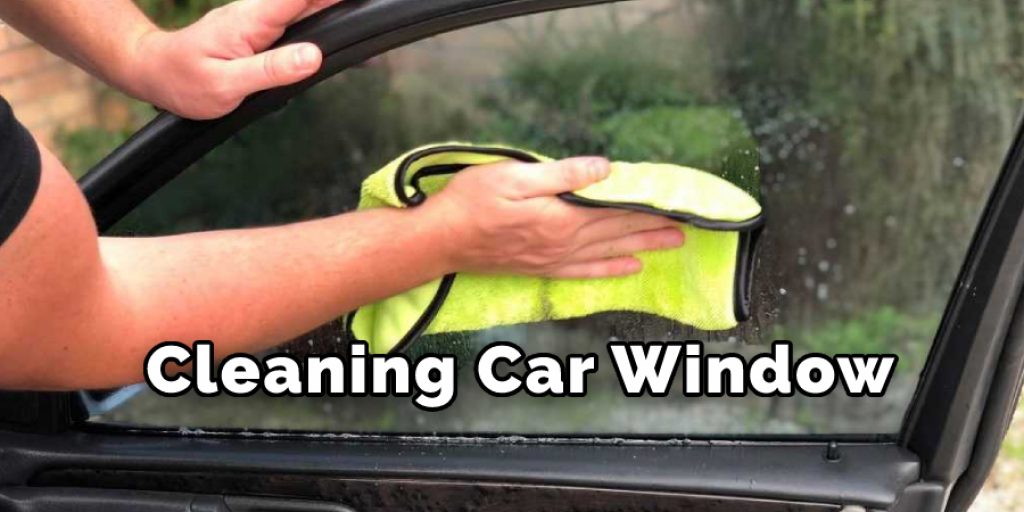
4. Avoiding Sap During Winter:
During the winter months, tree sap tends to remain on trees until it freezes overnight when temperatures drop below freezing. However, during the warmer months of summer, tree sap can harden and stick to trees for several weeks before suddenly falling off. For this reason, you may want to avoid driving under certain types of trees when the weather turns cold in the winter.
5. Using Chemical Treatments:
Many people use chemical treatments to prevent tree sap from sticking on their windshields. The ingredients in these chemicals include silicone and polymers, both of which create an adhesive layer on the windshield that prevents tree sap from sticking to it.
Difference Between Tree Sap and Tree Resin
Tree sap is the natural fluid of a plant. Tree resin, on the other hand, is an exudate. It is usually used for protective purposes or to seal wounds in plants and trees. Resin occurs naturally in most varieties of trees. The main difference between tree sap and tree resin is the thickness.
Tree resin is thicker than tree sap, so it contains much more of the plant’s natural elements. If you need to remove tree sap from your windshield or windows, you can use any methods mentioned on how to clean tree sap off windows. Tree sap can also be removed from concrete surfaces, clothing, and cars. If you want to learn how to remove tree sap from your clothes or carpet, read on. Tree sap removal can be tricky, especially if it has already dried.
Tree sap is not the same thing as resin. Resin is a sticky, yellowish-green liquid that exudes from the bark of pine trees when they are damaged or infested by certain insects. The resin hardens and makes it more difficult for these creatures to bore into the wood.
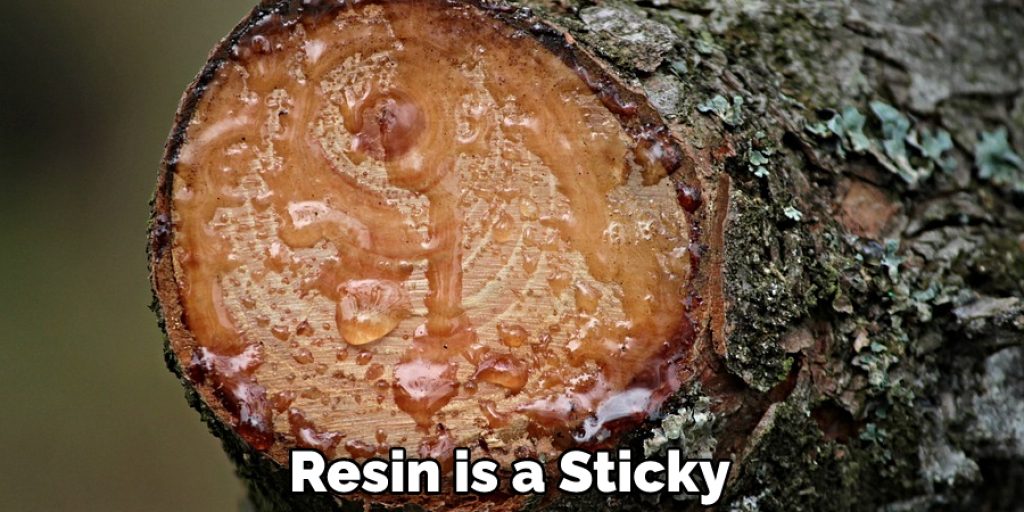
Resin is often confused with pitch, which is produced by several different conifers. Pitch is a dark, gooey substance that never accumulates on the outside of trees. Instead, it is produced inside bark and sapwood tissue in response to injuries caused by insects or fire.
Frequently Asked Questions
Q: When Do Trees Drop the Most Sap?
A: Tree sap is a viscous, sticky fluid produced in exudates associated with the tree’s vascular tissue. This substance oozes out of these pores and accumulates outside the tree whenever it is cut or damaged. Sap flow can also be caused by insect damage to trees or extreme weather conditions such as cold snaps or droughts.
Q: What Trees Produce the Most Tree Sap?
A: Pine tree, spruce, and birch trees are often culprits when it comes to producing annoying pine tree sap. Maple trees and elm trees are responsible for producing the pesky tree sap.
Q: Can Tree Sap Damage Windshields?
A: Tree Sap on a windshield glass can harm your car’s paint finish if you don’t clean it off quickly. Tree sap contains a high concentration of sugar, and this will ferment and cause more damage to the paint over time. The best way to remove tree sap from your windshield is with either a commercial product or petroleum jelly. It’s hard to get off if it sets on the glass too long, so immediately after hitting the car wash or gas station, use the solution to clean up the mess. Be sure to have a soft cloth or paper towel handy to help you wipe away the goo in one easy stroke.
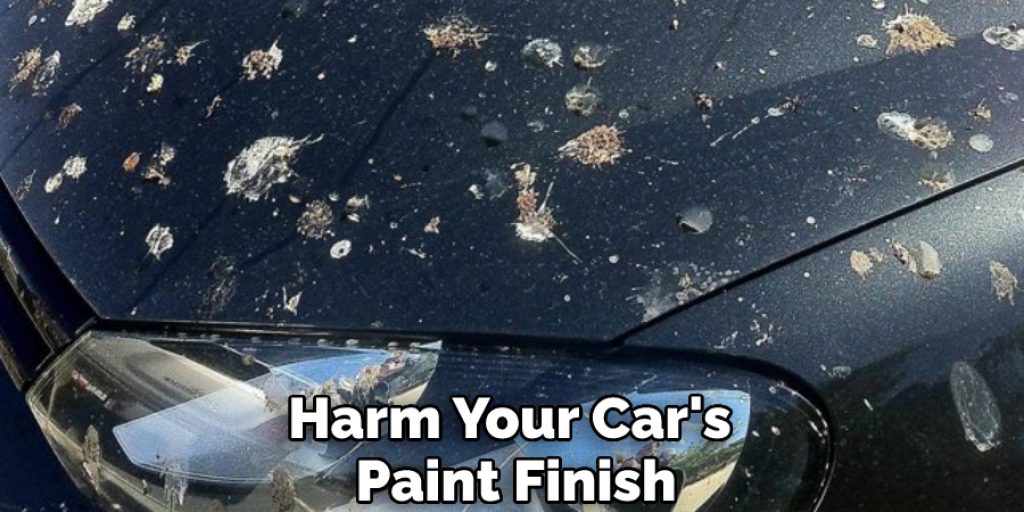
Conclusion
If you have had a tree in your yard for any length of time, the chances are that at some point, it will get sap on the windows. This is not only an unsightly mess but can be hazardous to anyone who doesn’t know what they’re doing.
Here in this blog post, we have provided information on how to clean tree sap off windows even the most stubborn tree sap from all of your glass surfaces. Let us know if it was helpful or not in the comment section below!




